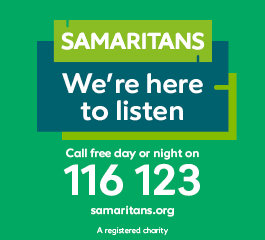World Suicide Prevention Day: using CBT to understand suicide
19 December 2017
I know from personal and professional experience the devastation that suicide can cause, for the person who dies, their family and the professionals involved in their care.
If we were going to work with CBT as a way of responding to suicidal thoughts where would be start?
A good place to start would be the 5 Areas model of Christine Padesky. Her use of the elegantly simple model has made our therapy accessible to other professionals and clients and can perhaps begin to help us understand the background to suicide.
What is the trigger?
The model states that there is always a trigger to any thought or mood state. This trigger can be an external event. It can all too often be an internal event, such as a memory or a worry.
If we are “cut up” in traffic we have angry thoughts and feel the emotion of anger. If we remember all of our previous failures this can be an internal trigger.
Thoughts and feelings
The trigger is the first area in the model. Our thoughts and feelings are areas two and three. How we think and feel will affect how we act and what we feel physically. These are areas four and five.
Each area relates to each other.
The more anger we feel the more tense we feel “physically” will increase our thoughts and feelings of anger. We cannot change our emotions and our physiology. They are hardwired into us.
We can however “think” in different ways and we can “behave” differently.
In CBT we try to change actions and behaviours which then have an effect on our emotions.
But how does all of this relate to suicide?
The act of suicide
Suicide is an “act”. If we choose to act in this way we need to think about the thoughts and emotions behind this action.
Everyone who I have worked with who has been depressed will at some time think of suicide. Some will translate those thoughts into actions.
What is it about the intensity of those thoughts which can lead to the act of suicide?
The thoughts we look for are those focussed on a sense of hopelessness because ultimately a life without hope will feel like a live that is not worth living.
A belief about failure can then be the internal trigger which leads to thoughts of hopelessness which may lead to the act. However, CBT only takes us so far.
The four fifths of the iceberg will be each person’s personal history, and their life style.
Certain factors will make people more vulnerable to suicide than others.
Some minority groups will be a higher risk statistically. Life style choices such as drugs or alcohol will also raise the risk of suicide. All of this will need to be taken into account.
Preventing suicide
Finally we must also remember that there are many steps that can be taken which could prevent someone killing themselves.
Less stigma towards mental health will hopefully mean that it is easier to talk about what is distressing.
Talking about difficult emotions is not easy but it is always preferable to the act of suicide.
Michael O'Sullivan is the author of 'A Practical Guide to Working with Depression'.
The Samaritans can be reached 24 hours a day on 116 123.


Comments
Write a Comment
Comment Submitted